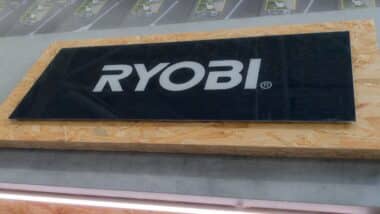 The Takata airbag defect and the numerous airbag recalls have plagued the auto industry for months. Just last month, the alleged Takata airbag defects spurred Toyota and Nissan to recall 6.5 million vehicles containing the allegedly defective Takata airbags.
The Takata airbag defect and the numerous airbag recalls have plagued the auto industry for months. Just last month, the alleged Takata airbag defects spurred Toyota and Nissan to recall 6.5 million vehicles containing the allegedly defective Takata airbags.
The personal injury reports involving the exploding airbags have also prompted automakers to search for the cause of the Takata defect, which allegedly causes the airbag to explode and send dangerous shrapnel into the cabin, endangering drivers and passengers.
Prior to the May airbag recall by Toyota and Nissan, the Takata recall had up to 25 million cars worldwide that were found to contain the exploding airbags. According to reports, over 100 injuries and at least six deaths have been attributed to the defective airbags manufactured by Takata Corp.
Toyota Tests Takata Airbags
Toyota states that the automaker has carried out its own tests on vehicles featuring the Takata airbags, some of which were even collected from junkyards. These vehicles showed that the airbags’ steel inflaters were not always airtight, which caused the propellant in the airbag to destabilize and thus increased the risk of a rupture and explosion. Additionally, Toyota performed CT scans on Takata airbag components to revise their integrity and it was allegedly found that “certain types of airbag inflaters were found to have a potential for moisture intrusion over time,” Toyota states.
Despite all these tests run by Toyota, the automaker admits that not much is known about the connection between the presence of moisture and the risk of an exploding Takata airbag. Toyota is just one of several automakers who created an alliance to conduct independent safety tests on the allegedly defective Takata airbags.
From these Takata airbag safety investigations, one concern that has arisen is the use of ammonium nitrate as the Takata airbag propellant. Ammonium nitrate is a cheap yet powerful explosive that can destabilize in the presence of moisture, according to engineers. However, a former Takata engineer claims that due to cost concerns, Takata chose to continue using this compound in their airbag inflaters despite its unstable chemical properties.
According to Takata, a manufacturing error resulted in some batches of their ammonium nitrate airbags to contain moisture, leading to the violent airbag explosions. However, this statement by the airbag manufacturer is contradicted by testimonies given by former engineers, as well as by Takata’s own airbag patents, which demonstrate that the company struggled with ammonium nitrate’s properties for the better part of a decade.
Former Engineer Speaks Out Against Airbag Design
Another concern connected with the Takata airbag design is whether or not the inflater corrodes over time, allowing moisture to reach in and mix with the explosive chemical. George R. Neff claimed in a recent interview that he worked with Takata to test the airbag inflater prototypes for potential leaks during the early 2000s, stating “We found a lot of leakers.”
Mr. Neff goes onto to say, “I told them that I thought their leak-test methods were crude. In a period of a year or two years or certainly five years, those devices could reach 100 percent equilibrium with the environment around them.” According to Neff, he gave his opinion on the Takata airbags to Takata management and was later asked to leave a meeting.
Toyota, automakers, and former engineers are not the only ones speaking out about the Takata airbag defect or taking action against the airbag maker. The National Highway Traffic Safety Administration (NHTSA) found that Takata was moving too slowly in its airbag recalls and fined Takata $14,000 a day in order to increase the company’s response to the airbag defect problem.
If you or a loved one were harmed by an exploding Takata airbag, you should consider filing a Takata lawsuit to possibly receive compensation for your personal injuries.
Do YOU have a legal claim? Fill out the form on this page now for a free, immediate, and confidential case evaluation. The airbag injury attorneys who work with Top Class Actions will contact you if you qualify to let you know if an individual airbag lawsuit or Takata airbag class action lawsuit is best for you. [In general, airbag injury lawsuits are filed individually by each plaintiff and are not class actions.] Hurry — statutes of limitations may apply.
ATTORNEY ADVERTISING
Top Class Actions is a Proud Member of the American Bar Association
LEGAL INFORMATION IS NOT LEGAL ADVICE
Top Class Actions Legal Statement
©2008 – 2025 Top Class Actions® LLC
Various Trademarks held by their respective owners
This website is not intended for viewing or usage by European Union citizens.
Get Help – It’s Free
Join a Free Takata Airbag Class Action Lawsuit Investigation
If you or someone you know were injured or killed by a Takata airbag explosion, you may have a legal claim. If you qualify, an attorney will contact you to discuss the details of your potential case at no charge to you.
NOTE: Do not fill out this form if you/your loved one were not injured or killed. You do not qualify and will not be contacted.
Oops! We could not locate your form.












